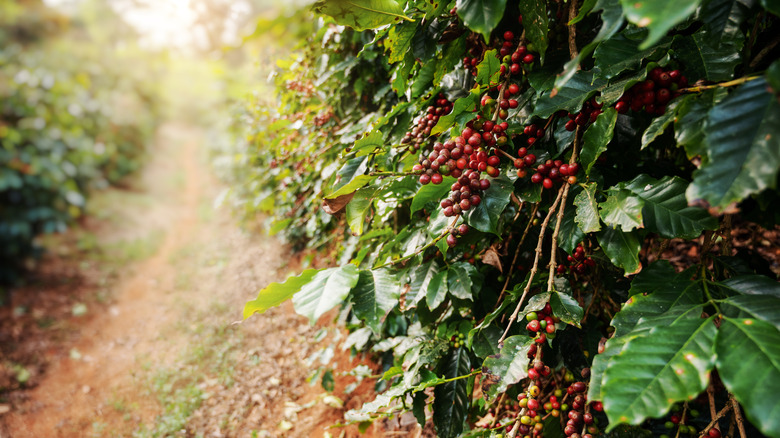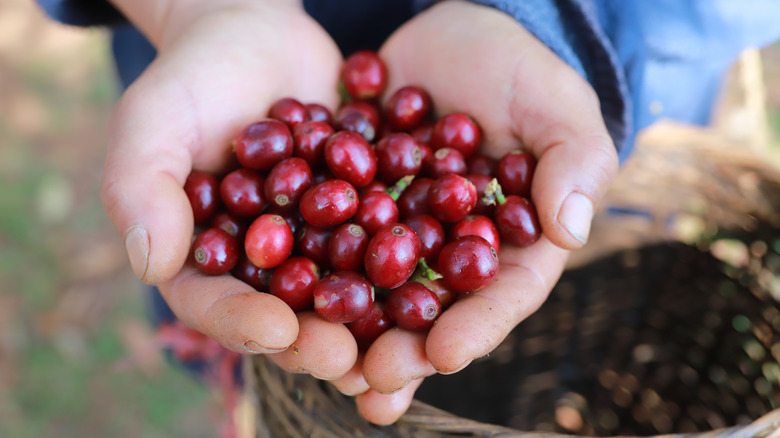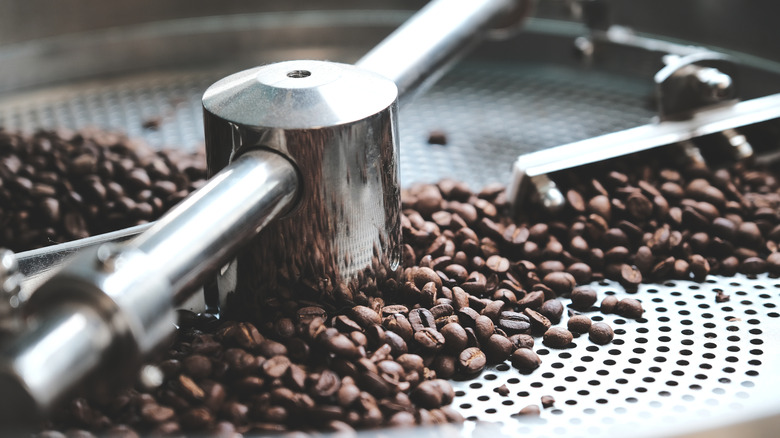These Are The Only 2 US States That Grow Coffee
Coffee plants are picky crops that require particular environments to grow. It takes almost 1.5 square feet of soil to make one coffee cup, and conditions must be perfect: altitude, sunlight, rainfall, and land all play important factors in producing the perfect fragrant batch (via Coffee Affection). According to NOAA Climate.gov, coffee thrives in moderate climates, areas traditionally near the equator with predictable temperatures and consistent weather patterns.
As Barista Joy explains, only 70 countries are able to grow and harvest coffee to meet global demand. Brazil leads the world in supply, farming almost half of the world's coffee (per Statista). As demand for coffee has only increased year after year, it's no surprise farmers outside of the "Coffee Belt" have looked to grow and ship batches of their own. While images of coffee plantations bring to mind luscious farms in exotic destinations, coffee farms have also cropped up in unexpected places — America, included.
Coffee production in the United States
Brazilian coffee first made its way to Hawaii in the 1820s (via Honolulu Coffee). Hawaiian weather helped the crop flourish, and at the 1873 World Fair, Kona coffee was internationally recognized. Hawaiian coffee brews smooth, with floral, fruity scents floating from harvested coffee berries (for more on describing coffee flavor and smell, check out World Coffee Research's Sensory Lexicon). As Next is Hawaii notes, an assortment of coffee can now be found throughout the island state: Ka'u, Hamakua, Kauai, Molokai, Waialua, and Puna coffees each offer unique flavors to brewed espressos.
Yet in 2002, Californian farmer Jay Ruskey planted beans he received from a friend. Twelve years later, his farm Good Land Organics placed California coffee on the international coffee map as well (via USA Today). Since then, more coffee farms have matured throughout the state; even musician Jason Mraz has helped produce and sell Frinj Coffee, a brand priding itself on premium roasts.
A promising future of American coffee
Though technically not a state, U.S. territory Puerto Rico has an impressive history of coffee production. According to Discover Puerto Rico, the exact origin of Puerto Rican coffee is unknown — either Spaniards or a Corsican monk brought coffee to the island sometime in the 18th century. The island's rich, volcanic soil contributed to a unique flavor that drove both production and popularity, eventually finding favor with the Pope in Rome and described as one of the best in the world (via Whetstone Magazine).
While Hawaii and California may be the only two U.S. states to grow coffee today, coffee is now on Florida's radar, too, as farmers and scientists research the possibility of coffee production in the Sunshine State. Though best known for citrus fruits, researchers at the University of Florida continue to assess what kind of coffee Floridian climate might produce. Colder temperatures have prevented Florida coffee crops from surviving, but climate change may bring about the warmer days coffee needs to thrive (per Florida Insider).


